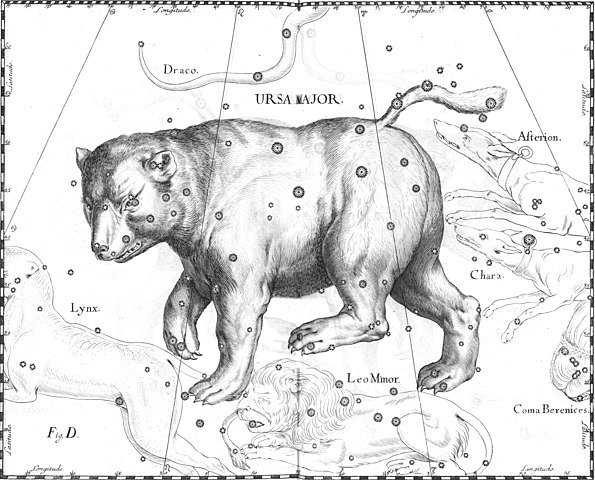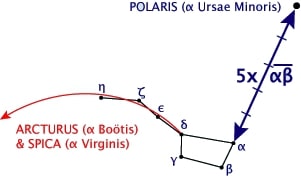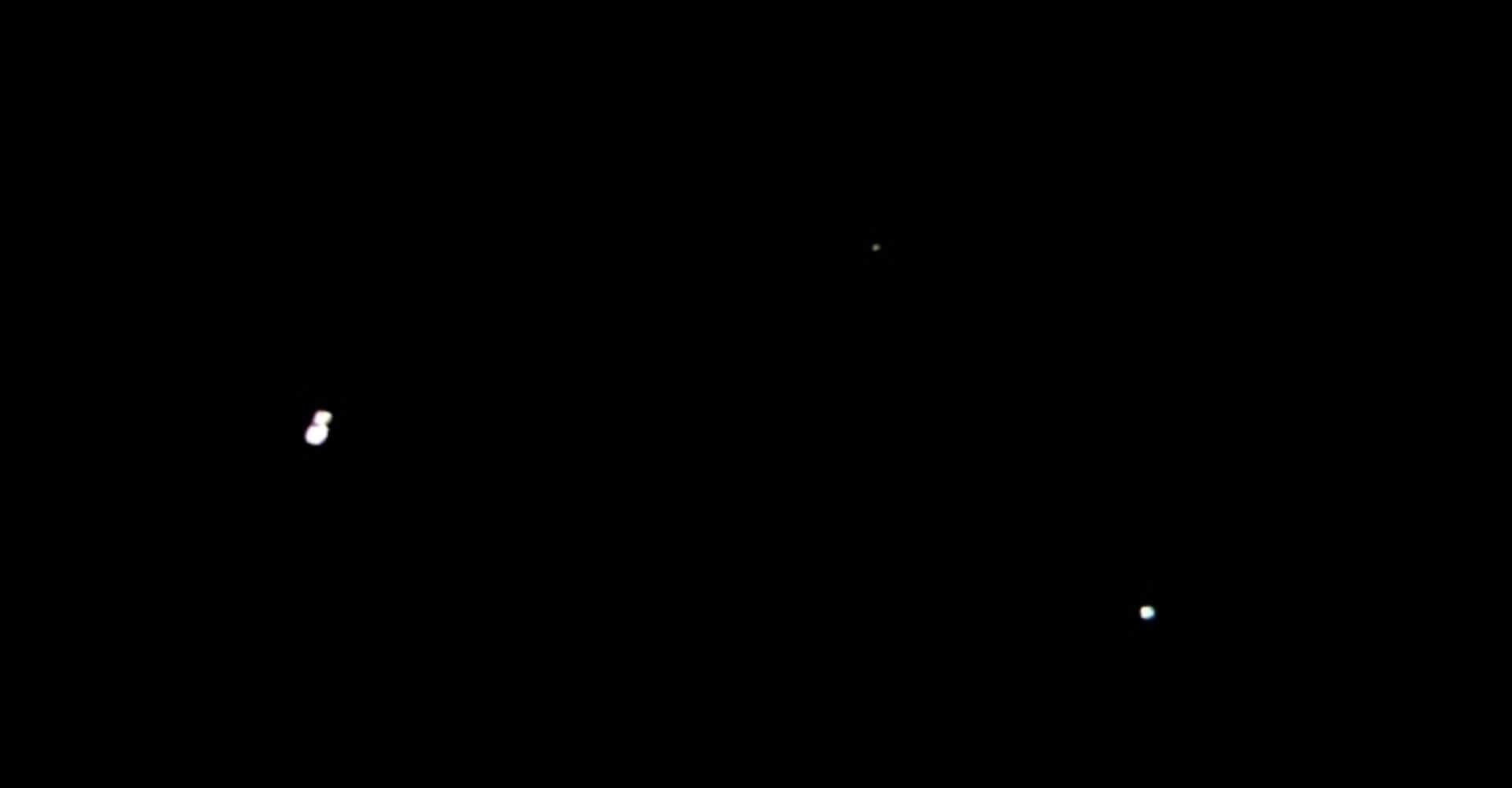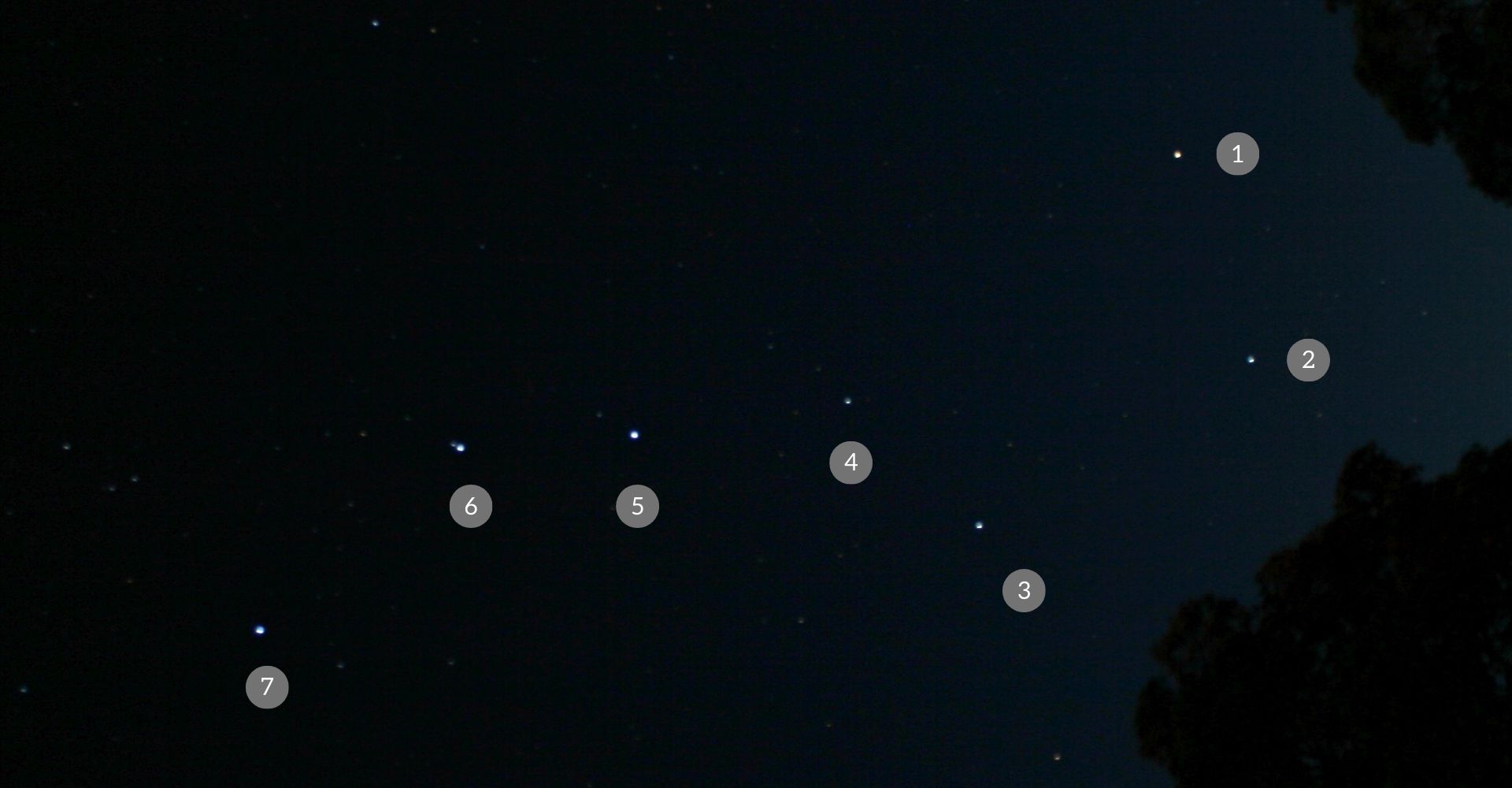
Let’s take a look at the Big Dipper, one of the easiest patterns to recognize in the northern hemisphere sky. It is indeed identifiable by its bowl shape formed by four stars, connected to its handle which contains three more stars. This group of stars has always been easy to recognize from time immemorial and by virtually all civilizations around the world.

The Big Dipper is located in the Ursa Major constellation (top right of the Bear).
This celestial drawing is not a constellation, but just an easy-to-find star pattern that is part of a large constellation, Ursa Major. Patterns of stars like this, i.e. that are only part of a constellation or that form a remarkable figure by connecting several major stars of different constellations, are called asterisms.
This asterism is very useful for several reasons, the most important being that it allows to find the North Star, Polaris, which allows to find true North. It is therefore important that sailors know how to use it so as not to get lost.

The two stars at the opposite of the handle are called pointers, because if you draw an imaginary line connecting the stars at the end of the “bowl” and continue upwards, you locate Polaris. Polaris is almost at the celestial North Pole. If you draw an imaginary line from this star to the horizon straight ahead, you will know the position of true north.
For anyone living north of the latitude of southern Spain, the Big Dipper is circumpolar. This means that from these latitudes it never seems to go down or rise from the horizon. It revolves around the celestial north pole like all the other stars and constellations but, as it is near the celestial north pole, we always see it in the night sky.
The star in the handle which is higher than the others is interesting. If you look closely, you will actually see two stars. It is a double star visible to the naked eye and, unusual for double stars, they both have a name: Mizar and Alcor. You should be able to separate the two stars with the naked eye.

Mizar A/B (left) and Alcor (right). Credit: Thomas Bresson / CC BY (https://creativecommons.org/licenses/by/2.0)
What is very interesting with this binary star is that each component is also a multiple system. Mizar has four stars orbiting their common center of gravity, which makes this double star a sixfold system, although these stars cannot be separated even by the largest terrestrial telescope. We know their existence thanks to spectroscopy, which divides the light of a star into its color constituents using a prism.
The seven stars of the Big Dipper have a name. The pointer’s two stars are called Merak (down) and Dubhe (up). It is the brightest star in the Big Dipper. The Big Dipper contains several deep sky objects, including several galaxies.
You can use the stars located in the Big Dipper to find others. If you draw an imaginary line that goes from the star at the bottom left of the bowl to the one at the top right (Dubhe) and that you travel about the same distance, you will find a nice pair of galaxies: M81 and M82. If you draw an equilateral triangle with the two stars at the end of the handle, Mizar / Alcor and Alkaid for the base, at the other point of the triangle you will find the galaxy M101.
The Big Dipper is a kind of orientation panel. If you use the two stars of the bowl near the handle, Megrez and Phad, as pointers but downwards unlike the North Star, you will find the bright star Regulus in the Leo constellation. If you use the handle while continuing its shape of arc of circle, the next brightest star is Arcturus in the Boötes constellation.
You now know how useful the Big Dipper is.
The stars that make up the Big Dipper

1) Dubhe
The second brightest star in the Big Dipper is one of the pointers of the North Star, Polaris. It is a giant star about 123 light years away from us.
2) Merak
Beta Ursae Majoris is the other star pointer to the pole. It is 2.7 times more massive than our Sun and is 79.4 light years away.
3) Phad
Also known as Phecda, Gamma Ursae Majoris is 83.2 light years from us. It is one of the stars that was used to classify the spectrum or light signature of other stars.
4) Megrez
It is the weakest of the seven stars in the Big Dipper. But Megrez is 63% larger than our Sun and 14 times brighter!
5) Alioth
The brightest star in the Big Dipper is the 31st brightest star in the sky. Alioth is 82 light years from Earth.
6) Mizar / Alcor
Made up of Mizar’s four-star system and Alcor’s dual system, this group of six stars is a good vision test. Only the two brighter stars are visible to the naked eye.
7) Alkaid
The last star in the handle of the Big Dipper is the third brightest in the asterism and one of the brightest in the whole sky. It is about 10 million years old.

- Image credits:
- Ursa Major in mythology: Johannes Hevelius / Public domain
- Locate Polaris, Arcturus and Spica with the Big Dipper: created by timecop and B00P from JPEG by Montréalais. This work is licensed under the Creative Commons Attribution-ShareAlike 3.0 License.
- The Big Dipper stars: Gh5046 at English Wikipedia / Public domain
- Mizar and Alcor: Thomas Bresson / CC BY (https://creativecommons.org/licenses/by/2.0)